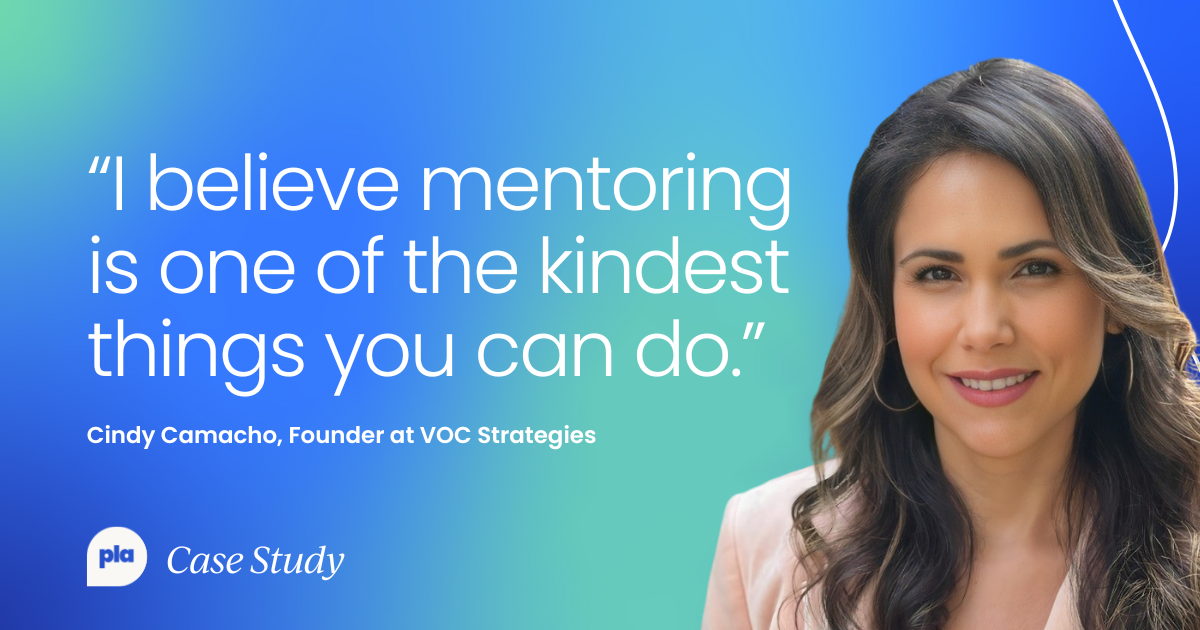Product management is now one of the most sought-after careers across the world.
It offers a unique and creative opportunity to develop a compelling product strategy and vision, inspire cross-functional teams, and uncover viable solutions that solve real customer problems while delivering positive business outcomes.
So, how do people forge a career in product management?
Firstly, I don’t know many people who started their careers in Product Management or even planned to end up here. I know for me personally, it just kind of happened…
My journey into product management
I started my career as a Customer Service Apprentice at British Gas Business after deciding not to go to university. The apprenticeship lasted for 12 months, incorporating education with hands-on work experience.
During that time, I rotated through account management, credit control, and sales, learning key skills like how to present with confidence, resolve conflicts, and think strategically.
I went on to secure a permanent role in the credit control team, where I fine-tuned my problem-solving and analytical skillset. I was suddenly in meetings with some of the largest brands in the UK, negotiating plans to successfully retrieve £100,000s+ at a time.
But I was still very young and hungry to continue learning, so I transitioned into a performance coach role, actively coaching and training service teams on their customer interactions to ensure the best possible experience. I started creating reports for senior management to assess key themes, priorities, and areas for improvement to help drive retention and improve customer satisfaction scores.
You might be thinking, how does any of this relate to product management?
Well, following a round of redundancy, a stakeholder of mine shared that he was recruiting for a Business Analyst (BA) role in the Management Information team.
I was 19 years old, I didn’t know a lot about Business Analysis, but I was up for the challenge. I quickly researched everything there was to know about the role, promoted my transferable skills in the interview, and succeeded.

Understanding the role of a product manager
Product managers (PMs) play a key role in creating a bridge between the wider business, customers, and technology teams.
They define a clear vision to ensure everyone is aligned and striving towards a common goal. Their mission is to empower the product development team to deliver products and features that delight customers and drive business value.
The role requires exceptional strategic thinking, problem-solving, strong communication at all levels, collaboration, and impeccable leadership skills. PMs must oversee the entire product lifecycle, from initial discovery through to launch and iterative improvements.
When I became a Business Analyst, I was exposed to parts of this role – gathering requirements, prioritizing new features, and ensuring they were technically feasible.
However, I quickly realised that I wanted to be more involved in driving the strategy and making key decisions. That’s when I decided to pursue product management and took my first CSPO course, which opened my eyes to the world of agile and scrum and led me to pursue my next position as a Product Owner.
Since then, I have steadily progressed up the product management ladder, moving from Product Owner to Product Manager, then advancing to Senior Product Manager, Lead Product Manager, and most recently, Principal Product Manager.
In my current role, I not only define and drive the broader product strategy but also mentor and lead a team of product managers, ensuring alignment with business objectives and fostering a culture of innovation and customer-centric decision-making.
This journey has allowed me to refine my strategic thinking, leadership skills, and ability to influence stakeholders at all levels of the organization.

Key skills for aspiring product managers
You don’t need years of experience in tech to become a great product manager. Whether you’re in sales, customer support, business analysis, marketing, or another role, the right mindset and skills can make all the difference.
Here are the most important capabilities for success:
Aligning teams
Inspiring and aligning teams and individuals is the key to being a successful product manager.
You need to ensure everyone across product, design, technology, and the wider business is clear on the product vision and how and why decisions are made. You will also need to help overcome blockers, resolve potential conflicts, negotiate priorities, and enable fast decision-making.
When I became a Product Owner, I quickly learned that rallying different teams around a shared vision was just as important as defining the vision itself. I had to ensure that everyone understood the priorities and objectives.
Strategic mindset
A strategic mindset is crucial for a product manager because they are responsible for defining the product goals, aligning them with business objectives, and ensuring long-term success.
Being strategic helps product managers make informed decisions, prioritize effectively, and drive sustainable growth. With limited resources, PMs must decide what to build and when. A strategic approach ensures that high-impact initiatives take precedence over low-value features.
As a Lead Product Manager, I was responsible for defining long-term goals that aligned with both customer needs and business objectives. I had to make tough prioritization decisions that balanced short-term wins with long-term growth.

Communication
Effective and proactive communication is one of the most critical skills for a product manager because they act as the bridge between multiple teams, stakeholders, and customers.
The ability to keep everyone informed and aligned on priorities, progress, and risks is a must for a successful career in product management. The last thing you want is a stakeholder regularly asking you what’s going on with your product or new feature.
I learned early in my career, from my days as a performance coach, that clear and proactive communication was key. Whether coaching teams on customer interactions or later presenting product roadmaps to executives, strong communication skills have always been essential.
Collaboration
Collaboration is essential for a product manager because they work with multiple teams to bring a product from idea to launch successfully.
Since product managers don’t usually have direct authority over teams, they must rely on collaboration to align everyone towards a shared goal.
When I was a Business Analyst, I worked closely with engineering teams to refine requirements. That experience taught me the importance of cross-functional collaboration, a skill that became even more critical as I moved up the product ladder.

Problem-solving
Problem-solving is one of the most critical skills for a product manager because they constantly face challenges that require strategic thinking, adaptability, and fast decision-making.
Product managers operate in an environment with shifting customer needs, market trends, and technical constraints so being able to stay composed amidst chaos to help identify solutions is key.
In credit control, I was constantly faced with complex challenges, negotiating payments and resolving disputes. That problem-solving mindset carried over into product management, where I now tackle strategic and technical challenges daily.
Customer-oriented
Being customer-oriented is essential for a product manager because the ultimate goal of any product is to solve customer problems and create value.
A customer-centric approach ensures that the product meets real needs, leading to higher uptake, user satisfaction, engagement, and business success.
As a PM, I’ve always prioritized the customer, much like I did when coaching service teams to enhance customer satisfaction scores. The ability to empathize with users and identify their pain points is fundamental to building successful products.
Data-driven
Being data-oriented is vital for a product manager because data-driven decisions lead to better product outcomes, improved customer experiences, and business growth.
In a role that requires balancing customer needs, business goals, and technical feasibility, data helps remove guesswork and bias. In my early roles, I created multiple reports for senior management to highlight key insights and trends to drive improvement.
That analytical approach has been invaluable in Product Management, where data informs every decision I make.
These skills are transferable and not unique to product management. Individuals with backgrounds in account management, consultancy, or programme management may also thrive in product development.
With these key capabilities and personal traits, you have the power to step into product management and shape the future of innovative products, inspire teams, solve meaningful problems, and deliver real value to customers while driving business growth.

How to Break into Product Management
Breaking into product management can be challenging, but with the right approach, anyone can make the transition. Here are some key tips to help you get started:
Promote your transferable skills
If you’re updating your resume, consider calling out the skills that most closely align with the product management role.
Think about how you enabled fast and effective decision making, fostered an environment of cross-functional collaboration, and delivered measurable outcomes.
This is exactly what I did when I transitioned from my performance coach role to business analysis, then from business analysis to product management. Highlighting my problem-solving, analytical, and communication skills helped me stand out.
Familiarise yourself with the product lifecycle
Proactively learn about the ideation, discovery, design, development, and go-to-market process to gain a greater understanding of how products evolve.
When I was first exposed to product development, I took every opportunity to learn about the process. I attended agile training, read product management books, and sought mentorship from experienced PMs.

Gain hands-on experience
This one can be difficult sometimes, but finding ways to play an active role in the product discovery and development processes can be incredibly valuable to help you break into product management.
Consider ways to support the product team as a subject matter expert, shadow user interviews, or help demo new features.
I took on additional responsibilities beyond my role as a Business Analyst, including supporting user research and participating in product demos. These experiences helped me bridge the gap between analysis and strategy.
Network with PMs
Build relationships with current product managers to learn from their experiences by attending product management meetups, webinars, and conferences. Engaging with a community can provide valuable insights and open doors to new opportunities.
Early in my career, I connected with product professionals at meetups and online forums. These conversations gave me invaluable insights into what it truly takes to succeed as a PM.

Enhance your analytical and data skills
Product managers rely heavily on data to make informed decisions. Learning how to analyze user behaviour and track product metrics could set you apart.
If you already work with product managers, try asking them to explain how priorities were decided or which metrics they are trying to impact. Understanding metrics was critical when I moved into product management. I made an effort to analyze user behaviour and track KPIs to inform decisions.
Master communication & leadership
Focus on practicing your communication techniques with stakeholders of different levels to make the most impact.
Think about what is most important for the individuals you are communicating with, for example: when engaging with C-Suite stakeholders, you should be clear, concise, and focused towards strategy and business objectives.
Whereas with an engineer, you may want to provide more detailed updates to ensure they have all the information they need to work autonomously.
My background helped me sharpen my communication skills, which later became essential in stakeholder management as a PM.

Keep learning and staying up to date on trending processes, tools, and frameworks
This is crucial for anyone wanting to forge a career in product management, as well as those already doing the role. There is a wealth of free and paid-for content available online to get you started, as well as webinars and community events.
With a Product-Led Alliance membership, you can gain access to 100s of articles from product experts, podcasts, in-person events, plus much more.
Even now, as a Principal Product Manager, I constantly learn from industry trends, webinars, and communities like Product-Led Alliance to stay ahead.
Consider an internal move
If you have already established a strong personal brand and built solid relationships with stakeholders, along with having transferable skills, one of the best ways to transition into product management is within your current organization.
This approach lets you gain hands-on experience in product management within an industry you're already familiar with, and ideally, with a product you know well.
My transition into product management was made possible by leveraging my existing relationships and skills within the same organization. Moving internally can be one of the most effective ways to break into the field.
Final thoughts
Anyone with the right skills and mindset has what it takes to forge a successful career in product management. My journey is proof that you don’t need a technical background or years of experience in tech to thrive.
If you’re passionate about solving problems, driving strategy, and collaborating with cross-functional teams, product management could be the perfect career for you.



 Follow us on LinkedIn
Follow us on LinkedIn











